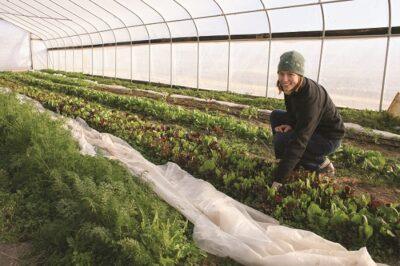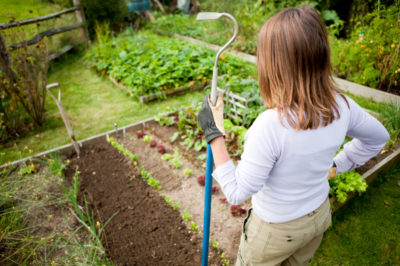[ad_1]
When looking out over a snow-covered yard, the last thing you will probably think about is gardening.
Winter, however, is a wonderful time to start planning for your spring vegetable garden. You can look at what you have and decide if you want to keep it as it is, or try a new herb or vegetable. Not only does the winter give you time to plan, but also to learn about new types of plants. Winter gives you a good time to look at your yard area and decide how to set the garden up, where each plant will go, and what types of vegetables, herbs or companion plants you want to grow.
Whether you wish to have a tiny herb garden or a much larger vegetable garden, preparation is key to success. The more prepared you are, the more rewarding and fun it will be for you. Gardens provide freshness and color not only to your yard, but to your life. Although gardening does involve some hard work, having good healthy fun is the most important idea. Here are a few steps to help you prepare during the cold months:
STEP ONE:
The first step to planning your spring garden: Review what last year’s garden was like. Look at what worked well and what didn’t. This is also where you can think about what plants you had an abundance of, and those that didn’t grow well. If the reason for failure was fixable, now is the time to plan that solution. Review the frost dates in your region. This will help you decide what plants to choose. Adjust the size of your garden to something you can handle and decide on the layout. Sometimes using a notebook is handy and easy to refer to if you have new ideas or forget something. Write down where the sun is throughout the day. This will help when you decide where to put your garden, and where certain plants will grow the best.
New Natural Fertilizer Doubles Garden Production!
STEP TWO:
Next, it is time to actually draw a diagram. Draw your garden, and label the areas you wish to plant certain herbs or vegetables. Keep in mind the spacing of seeds, the size of growing and mature plants, and the rotation of crops. A traditional way to plant a garden is to divide it into three or four plots. This will make it easy to rotate and organize. The sections are usually brassicas (which are cabbages, cauliflower and Brussels sprouts, for example), root crops (carrots, beets, potatoes and parsnips), and legumes (beans, peas). The fourth part can be your choice or left empty. Perhaps you would like to use that last section for herbs. Rotating your plants every few (three or four) years prevents pests and diseases from taking a foothold in your garden. Once this is done, look at your list and see which plants are needed to start inside or outside, and when. Record this in your notebook and use it as reference when needed.

spring garden
STEP THREE:
When you have a solid garden plan, you can always check over your gardening tools. Have them repaired before spring if possible. Find supplies you will need and have them stocked. This is the time to order seeds or plants. Also, it’s a great time to go to home and garden shows and visit botanical gardens. Look through some gardening magazines and expand your green thumb knowledge.
Use The Secrets Of Sea Minerals To Get More Nutritionally Dense Food
STEP FOUR:
If you are able to see your garden plot (i.e., if it’s not covered with snow), winter is a good time to remove stones and look at the soil. Soil is important no matter what season it is. Winter is a good time to take care of it so it is ready to go in the spring. Grab a shovel and turn over the top six to 12 inches of soil. Next, take organic material, either leaves or manure (you may have to buy from a store), and put it on top. Once the soil is dry in the spring, grab your shovel and break it down again, until it is fine.
At this time of year, you can also experiment with different types of composting. Worm composting doesn’t take much room and can be used for the organic material needed for the soil. Search out any local farmers with aged manure; most are willing to sell or even let you take it for free.
Planning your spring garden now will also give you something to look forward to on those cold, wintry days. Planning ahead will save you time and hard-earned money. Remember, besides crop planning, you can also join gardening groups, either in person or online. It is a wonderful way to get ideas and participate in garden brainstorming, whether it be discovering new types of plants … or even deciding where to put that garden gnome!
What are some ways you get your spring garden ready, during winter? Share your tips in the section below:
[ad_2]
Source link
Get more stuff like this
in your inbox
Don't Be Left Unprepared
Thank you for subscribing.
Something went wrong.




